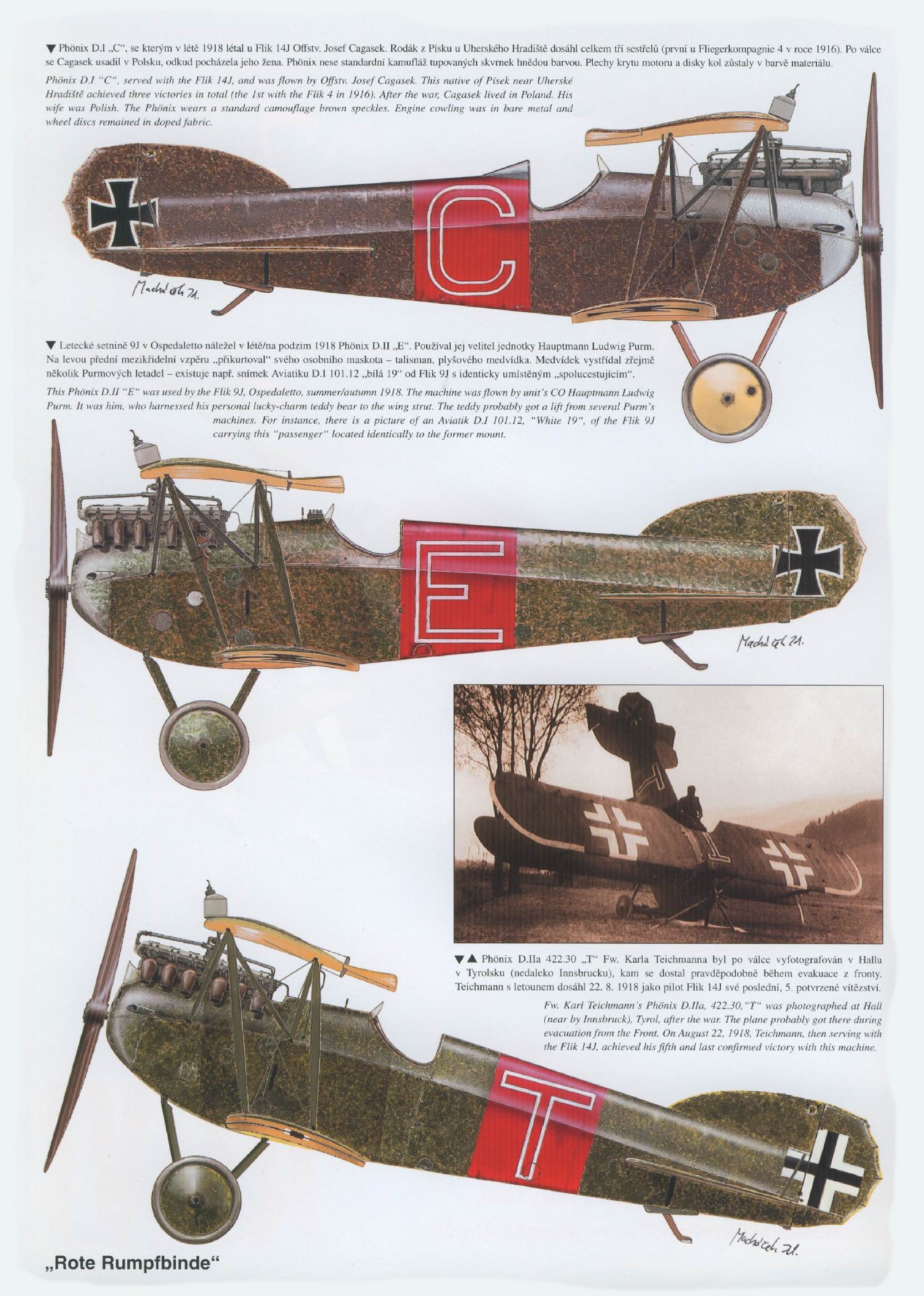
The leading Austro-Hungarian pilot was Hauptmann Godwin
Brumowski, a professional soldier who had joined the air service in 1915,
becoming commanding officer of Fliegerkompagnie (Flik) 12 in the East. Late in
1916 he visited the Western Front to study German fighter organization, and on
return formed the first Austro-Hungarian fighter unit, Flik 41J, with
Brandenberg D. Is. By late 1917 Austrian-built Albatros D. IIIs were received
in time for the Caporetto fighting, in which Brumowski played a leading part.
His final score has been quoted variously as 35-40. He served with the Austrian
Air Force after the war, but was killed in a flying accident in 1937.
One of his most successful pilots was half-English
ex-cavalryman Oberleutnant Frank Linke-Crawford, who joined the flying service
in 1916, first flying on the Italian Front with Flik 12. He later transferred
to Brumowski’s Flik 41J, and late in 1917 was given command of Flik 60J. His
aircraft went down in flames on 31 July 1918 when five aircraft from his unit
were lost in combat with Italian and British fighters. It was originally
believed that Capt Jack Cottle of 45 Squadron (11 victories) had shot down the
27 to 30 victory Austro-Hungarian number three ace, although recent research
indicates that it is more likely that he fell to an Italian Hanriot.
Obit Benno Fiala, Ritter von Fernbrugg, joined the air
service in 1914, initially as a technical officer, and then as an observer on
the Russian Front. He then moved to the Italian Front with Flik 10, and on 4
May 1916 was observer in a Brandenberg C.I which intercepted the Italian
airship M.4 which had bombed Lubiana by night, but had suffered an engine
failure. He shot this dirigible down with his flexible machine-gun for his
first victory. Training as a pilot, he flew two-seaters in which he is reported
to have gained five victories, but finally in 1917 transferred to single-seater
Brandenberg D. Is. He later became commander of Flik 51J. and on 3 March 1918
shot down Lt A Jerrard of 66 Squadron, RAF, who was later awarded the Victoria
Cross. Fiala survived the war with a score of 27-29, joining Junkers aircraft
as an engineer.
In the class-conscious and conservative Austro-Hungarian
forces it was virtually impossible for an NCO to be commissioned, however
splendid his service, and there is no better example of this than the number
two ace, Offizierstellvertreter Julius Arigi. Becoming a pilot in November 1914
at the age of 19, Arigi served on the Russian and Balkan fronts, achieving an
astonishing success on 22 August 1916 when in a single flight in a two-seater
he and his gunner claimed five aircraft shot down! On 4 September they gained a
further success over an Italian Farman in Albania. Converting to single-seaters
early in 1917, he moved to the Italian Front and later in the year served in
Flik 60J. The most highly decorated NCO with 26-32 victories, he became a test
pilot after the war. After 1938 he served in the Luftwaffe as an instructor.
his two most brilliant pupils being the World War II aces Marseille and
Nowotny. He lived to a ripe old age, dying on 1 August 1981. Another leading
NCO ace was Josef Kiss, who became a pilot in April 1916. On the Italian front
with Flik 55J he was wounded in combat with the Italian ace Scaroni on 25
January 1918, but on 24 May was shot down and killed by an RAF Camel – probably
that flown by Capt WG Barker of 66 Squadron. With 19 victories to his credit,
this NCO did get his commission – posthumously!
Linienschiffsleutnant Gottfried Banfield became an ace in rather different circumstances. A Naval Air Service pilot who flew Brandenberg K. D. W. fighter flying-boats over the northern Adriatic coast, his first four victories were all against balloons. Intercepting French and Italian air raids on Trieste, he then brought down three F. B. A. flying-boats and a Caproni trimotor by September 1916, his final score reaching nine.